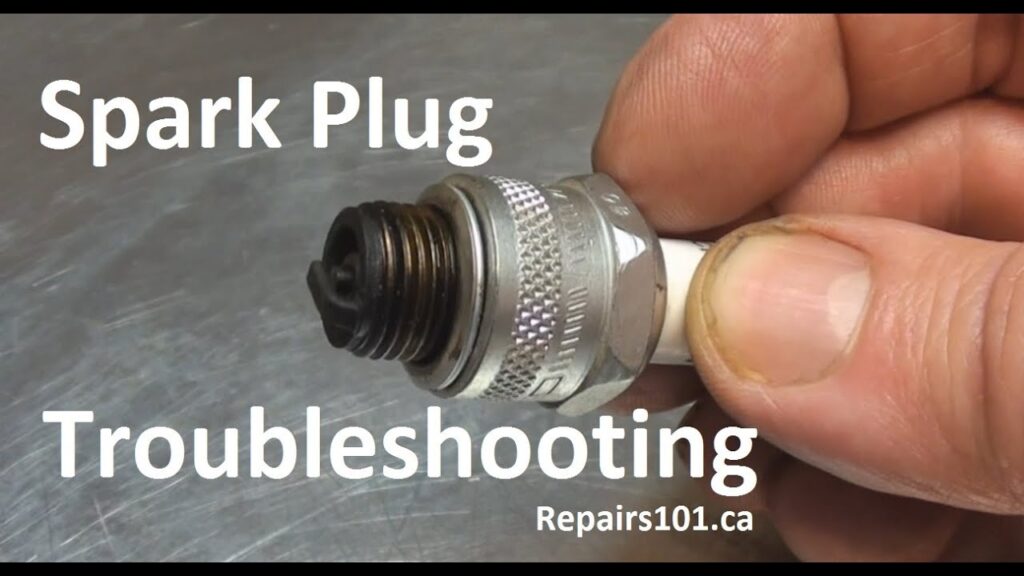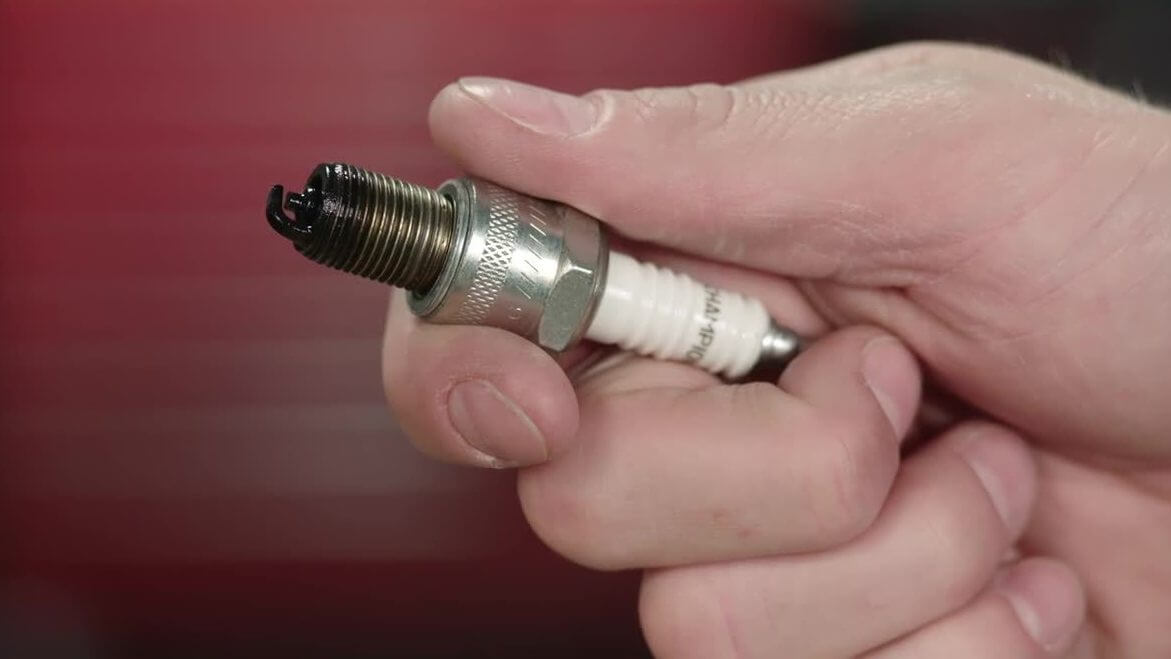Curious about the health of your blower spark plug? Worried it might be on the verge of calling it quits? In this article, we will explore the telltale signs that can help you determine if your blower spark plug is indeed bad. From sputtering engines to difficulty starting, we’ve got you covered with all the need-to-know information about identifying a faulty blower spark plug. So, sit back, relax, and let us guide you through this informative journey!
Common Symptoms
Difficulty starting the blower
One of the common symptoms of a bad blower spark plug is difficulty starting the blower. If you find yourself struggling to start the blower or if it takes several attempts before it finally starts, it may be due to a faulty spark plug. The spark plug plays a crucial role in igniting the fuel-air mixture in the engine, and if it is not functioning properly, it can lead to difficulties in starting the blower.
Frequent stalling or misfiring
Another telltale sign of a bad blower spark plug is frequent stalling or misfiring of the engine. If the spark plug is not producing a strong enough spark, it can result in incomplete combustion of the fuel-air mixture, leading to the engine stalling or misfiring. You may notice a rough idle or a lack of power when operating the blower. This is often a sign that the spark plug is in need of replacement.
Reduced power or performance
A noticeable decrease in power or performance can also indicate a bad blower spark plug. When the spark plug is not providing an adequate spark, the engine may struggle to generate the power needed to operate the blower effectively. If you feel that your blower is not performing as it should or if it feels weaker than usual, it is worth checking the condition of the spark plug.
Visual Inspection
Checking for physical damage or wear
To determine if your blower spark plug is bad, start by conducting a visual inspection. Look for any visible signs of physical damage or wear, such as cracks, chips, or broken electrodes. Physical damage can negatively impact the performance of the spark plug and may indicate the need for replacement.
Inspecting for carbon deposits
Inspecting for carbon deposits is another important aspect of the visual inspection. Carbon deposits can accumulate on the spark plug over time and can interfere with the proper functioning of the spark plug. If you notice a thick layer of black soot or carbon deposits on the spark plug, it is an indication that it is not operating efficiently and should be replaced.
Examining the electrode
Take a closer look at the electrode of the spark plug. The electrode should be clean and free of any signs of damage or excessive wear. If the electrode appears worn out or if there are any signs of erosion, it is a clear indication that the spark plug is in poor condition and needs to be replaced.

This image is property of i.ytimg.com.
Spark Testing
Using a spark tester
Spark testing is a simple and effective way to determine the functionality of a spark plug. Using a spark tester, connect the tester to the spark plug wire and then crank the blower’s engine. The spark tester will indicate whether or not the spark plug is producing a consistent spark. This allows you to assess the condition of the spark plug and determine if it needs to be replaced.
Checking for consistent spark
While using the spark tester, pay attention to the consistency of the spark. A healthy spark plug should produce a strong, consistent spark every time. If the spark appears weak or sporadic, it may indicate a problem with the spark plug. In such cases, replacing the spark plug is recommended to restore optimal performance to the blower.
Assessing the spark color
In addition to the consistency of the spark, the color of the spark can also provide valuable insights into the condition of the spark plug. A healthy spark plug will produce a bright blue spark. If the spark appears yellow, orange, or even white, it may indicate a problem with the spark plug. Different colors may suggest fuel mixture issues or other underlying problems, which should be addressed to maintain the blower’s performance.
Resistance Testing
Gathering necessary tools
Resistance testing is another method to determine the condition of a spark plug. To perform this test, you will need a digital multimeter with an ohm function. It is important to gather the necessary tools before proceeding with the resistance test.
Determining the correct resistance value
The resistance value of a spark plug can vary depending on the manufacturer and model. Refer to the spark plug manufacturer’s specifications or the blower’s manual to determine the correct resistance value for your spark plug. This information will help you determine if the spark plug is within the acceptable range or if it needs to be replaced.
Testing the spark plug’s resistance
To test the spark plug’s resistance, disconnect the spark plug wire and remove the spark plug from the blower’s engine. Set the multimeter to the ohm function and measure the resistance by touching the multimeter’s probes to the terminal and electrode of the spark plug. Compare the measured resistance to the specified value. If the resistance is significantly higher or lower than the recommended range, it may indicate a faulty spark plug that requires replacement.

This image is property of besthomegear.com.
Compare with New Spark Plug
Understanding the appearance of a new spark plug
Before replacing the spark plug, it is helpful to understand the appearance of a new, properly functioning spark plug. A new spark plug will have a clean, undamaged electrode and an insulator with no signs of carbon deposits. Familiarizing yourself with the appearance of a new spark plug will allow you to compare it to the old spark plug and assess its condition accurately.
Comparing the differences between old and new spark plugs
Once you have removed the old spark plug, compare it side by side with a new spark plug. Look for any noticeable differences in the electrode, insulator, or overall condition. If the old spark plug shows signs of wear, damage, or excessive carbon deposits, it is a clear indication that it needs to be replaced. Comparing the differences between old and new spark plugs can give you valuable information about the condition of the old spark plug.
Replacement Considerations
Knowing the recommended interval for spark plug replacement
It is important to be aware of the recommended interval for spark plug replacement in your blower. Spark plugs typically need to be replaced after a certain number of operating hours or after a specified period. Refer to the manufacturer’s recommendations or consult the blower’s manual to determine the appropriate replacement interval. Following these guidelines ensures that your blower continues to operate at its best.
Considering other potential issues
While a bad spark plug is a common cause of blower problems, there may be other underlying issues contributing to the symptoms experienced. It is important to consider potential issues such as fuel quality, air filters, or other components of the blower’s ignition system. Addressing any additional issues alongside spark plug replacement can help improve overall performance and prevent future problems.
Seeking professional help
If you are unsure about how to proceed with the inspection or replacement of the spark plug, it is always wise to seek professional help. A knowledgeable technician can diagnose the problem accurately, replace the spark plug if necessary, and ensure that the blower is functioning optimally. Professional assistance can save time, prevent further damage, and provide peace of mind.

This image is property of i.ytimg.com.
Preventive Maintenance
Regularly inspecting the spark plug
To avoid potential issues with your blower’s spark plug, it is essential to include regular inspections as part of your preventive maintenance routine. Inspect the spark plug periodically for any signs of wear, damage, or carbon deposits. By catching any problems early on, you can prevent them from escalating into more significant issues and ensure that the spark plug continues to perform optimally.
Cleaning or replacing the spark plug
In some instances, the spark plug may require cleaning rather than immediate replacement. If the spark plug appears dirty or has light carbon deposits, cleaning it with a specialized spark plug cleaner may restore its performance. However, if the spark plug is significantly worn or damaged, it is best to replace it with a new one to maintain the blower’s efficiency.
Following manufacturer’s maintenance schedule
To keep your blower in good working condition, it is important to follow the manufacturer’s maintenance schedule. This schedule typically includes recommended maintenance tasks, such as spark plug replacement, at specified intervals. Adhering to the maintenance schedule ensures that your blower receives the necessary attention and prolongs its lifespan.
Signs of a Healthy Spark Plug
Strong and consistent spark
A healthy spark plug will produce a strong and consistent spark when tested. The spark should be bright blue in color and visible in all conditions. A robust spark indicates that the spark plug is functioning properly and igniting the fuel-air mixture effectively.
Clean appearance and absence of carbon deposits
A spark plug in good condition will have a clean appearance. There should be no signs of chipping, cracking, or excessive wear on the electrode or insulator. Additionally, a healthy spark plug will be free from carbon deposits, which can hinder its performance.
Proper spark plug gap
The spark plug gap refers to the distance between the center electrode and the ground electrode. A healthy spark plug will have the correct gap, as specified by the manufacturer. This gap is crucial for ensuring optimal performance and proper combustion in the engine.

This image is property of i0.wp.com.
Effects of a Bad Blower Spark Plug
Impaired engine performance
A bad blower spark plug can significantly impact the performance of the engine. When the spark plug is faulty, the spark produced may not be strong enough to ignite the fuel-air mixture properly. This can result in a decrease in power, rough idle, or hesitation during acceleration. Addressing a bad spark plug promptly can restore the engine’s performance and improve overall efficiency.
Reduced fuel efficiency
A malfunctioning spark plug can also lead to reduced fuel efficiency. When the spark plug is not operating efficiently, it can result in incomplete combustion of the fuel. This can cause the engine to consume more fuel than necessary, leading to decreased fuel efficiency and increased operating costs. Replacing the spark plug can help restore optimal combustion and improve fuel economy.
Increased risk of engine damage
Operating a blower with a bad spark plug can pose a risk of engine damage. Incomplete combustion caused by a faulty spark plug can result in the accumulation of unburned fuel and deposits in the engine. Over time, these deposits can lead to engine damage, such as fouled valves or a damaged piston. Regularly inspecting and replacing the spark plug can help prevent more extensive and costly engine repairs.
Conclusion
Keeping an eye out for common symptoms and performing regular visual inspections, spark testing, and resistance testing can help identify a bad blower spark plug. Comparing the old spark plug with a new one can further confirm the need for replacement. It is crucial to follow the manufacturer’s maintenance schedule and engage in preventive maintenance practices to ensure the optimal performance of your blower. By addressing a bad spark plug promptly, you can improve engine performance, fuel efficiency, and prevent further damage, ultimately prolonging the lifespan of your blower.

This image is property of www.lawnmowerfixed.com.
